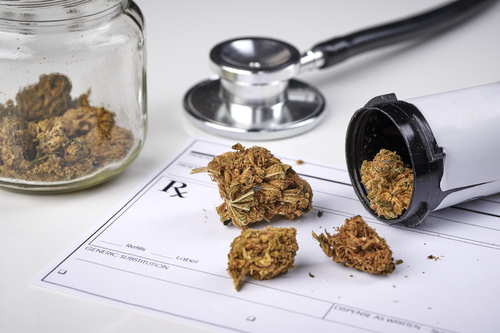Not Enough Info About Effects of Cannabis Use, Parkinson’s Foundation States
Written by |

A consensus statement from the Parkinson’s Foundation declares there isn’t enough data yet to draw reliable conclusions about whether medical cannabis products might be beneficial in treating Parkinson’s disease, and calls for more research.
For people with Parkinson’s who choose to use such products, the statement urges caution, stressing the importance of open communication with healthcare providers, starting at low doses, and vigilantly monitoring for possibly harmful side effects.
The cannabis plant contains hundreds of biologically active compounds, the most notable being tetrahydrocannabinol (THC), which is responsible for the “high” associated with cannabis use, and cannabidiol (CBD), which does not produce a “high” but has other effects on the body.
In recent years, the plant has garnered renewed interest — by both researchers and the lay public — for its potential medical applications. Medications containing THC and/or CBD, such as Epidiolex and dronabinol (brand names Marinol and Syndros) have been approved by the U.S. Food and Drug Administration (FDA) for treating specific forms of epilepsy and symptoms related to AIDS and cancer, respectively.
In the U.S., medicinal cannabis is federally illegal, but is approved for medicinal and/or recreational use in 33 states, as well as the District of Columbia and several territories. In 17 of these states, medical cannabis is approved for Parkinson’s.
The Parkinson’s Foundation convened a group of 40 experts to draft a statement regarding the use of cannabis products in Parkinson’s in March 2019. The group included clinicians, researchers, a nurse, a pharmacologist, members of industry and non-profit organizations, staff from the foundation, and people with the disease.
At present, there is an abundance of hearsay regarding the use of cannabis in Parkinson’s; however, there is a lack of hard data. Only four randomized clinical trials have been conducted testing cannabis products in people with Parkinson’s.
“These trials have uniformly failed to find evidence of benefit,” the statement says. “However, the of lack consistency in the ways the studies were conducted, the ways in which cannabis was given, and the way outcomes were measured, make these studies inconclusive at best.”
Other limitations of these trials include a low sample size (the largest had 24 participants) and poorly defined placebos. None of the trials tested smoked cannabis, which is the most common method for recreational cannabis use.
Other studies have reported benefits of cannabis in Parkinson’s ranging from reduced tremors to improved sleep and lessened pain. However, these results came from surveys of current users and open-label studies (meaning both the participants and the researchers knew what the participants were receiving).
“We thus do not know whether these reported effects are truly related to cannabis use or may represent placebo effects or other biases in the study,” the statement says. “We also do not know the optimal dose or types of cannabinoids to use for PD symptoms.”
There is a fair amount of evidence that cannabis use could have undesirable side effects. For instance, inhaling smoke of any kind is liable to cause lung damage. Ingesting cannabis (edibles) can easily lead to too-high doses, which is particularly a concern given the lack of federal regulation of cannabis-containing products.
Additionally, the enzymes in the liver that break down cannabinoids are often involved in processing other medications, so there is a potential for drug-drug interactions.
For those reasons, the statement stresses that people with Parkinson’s who choose to use cannabis products should communicate closely and honestly with their healthcare providers. Medical cannabis should be treated like other medication, starting with small doses and gradually increasing, with vigilant monitoring for side effects.
The statement also recommends that, where possible, people work with a single dispensary. Because of the lack of regulation for cannabis products, there is no guarantee that one dispensary’s products will be the same as another’s, even if they are identically labeled.
Collectively, the statement emphasizes the need for further research on the use of cannabis products in Parkinson’s, while offering some guidance for people who choose to use such products in the absence of hard evidence.
“There is a huge unmet need to develop well-designed studies that will address the question of whether cannabis-based medicines offer therapeutic benefit in the treatment of motor and non-motor symptoms of PD … The number of unanswered questions about the use of cannabinoids in PD far outweighs what we know,” the statement says.
“Ultimately, more research on medical cannabis is still needed to determine whether its use can have positive or adverse effects for Parkinson’s disease symptoms,” James Beck, PhD, chief scientific officer of the Parkinson’s Foundation, said in a press release.





